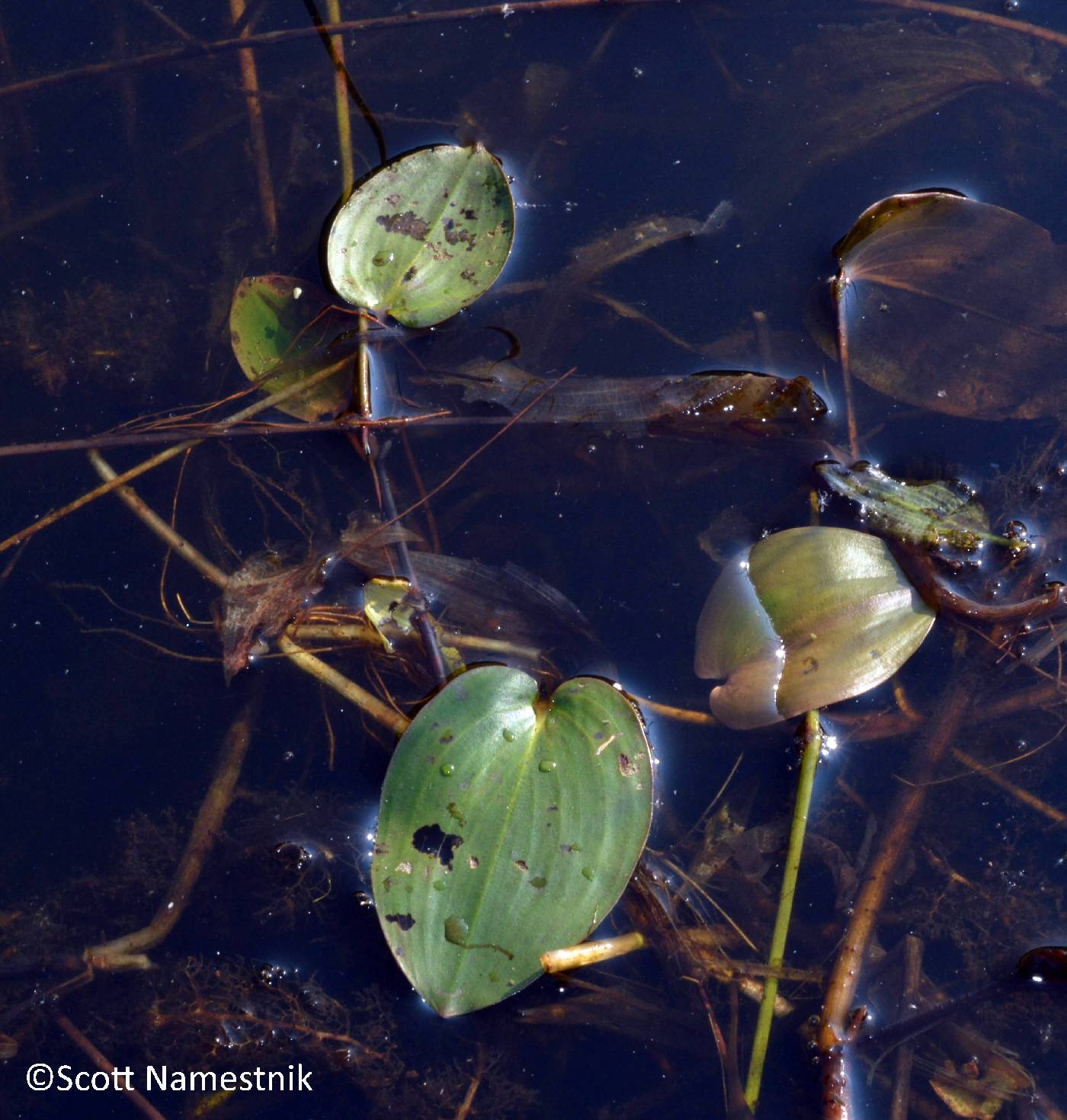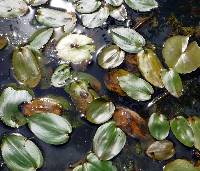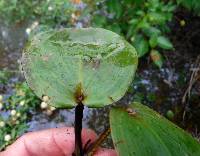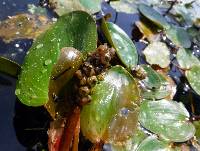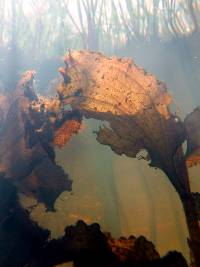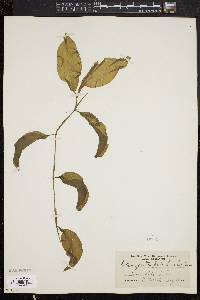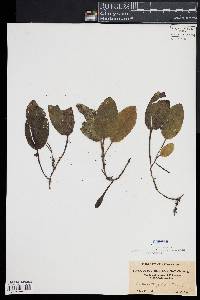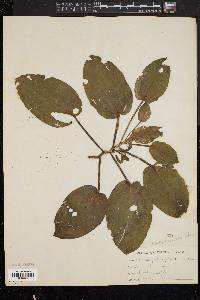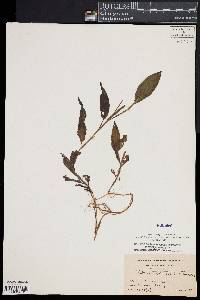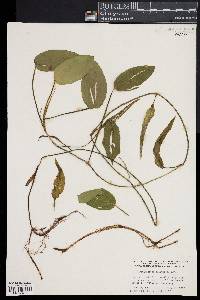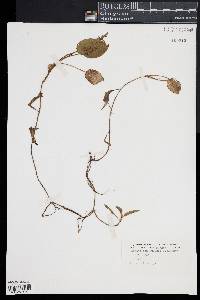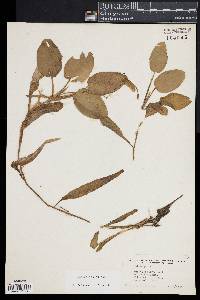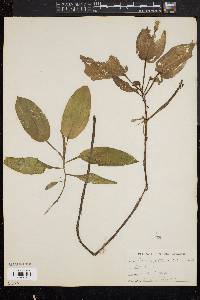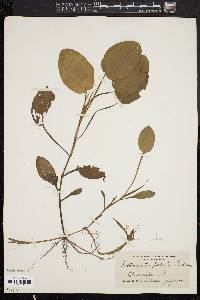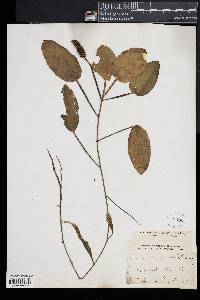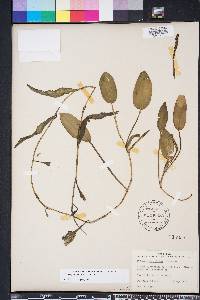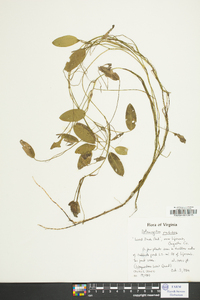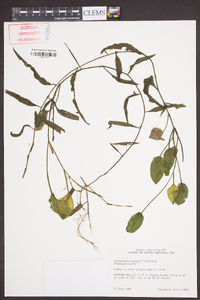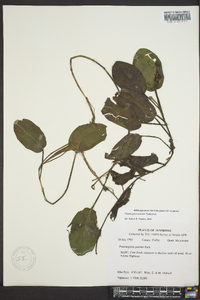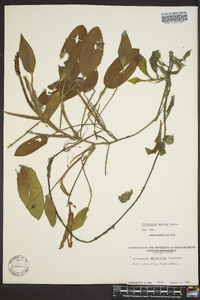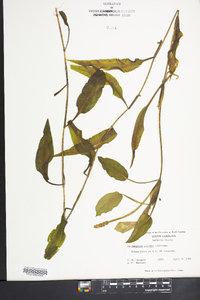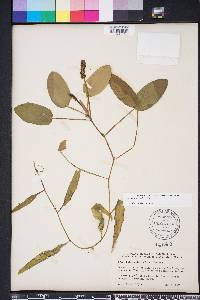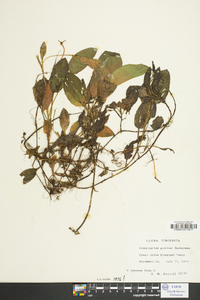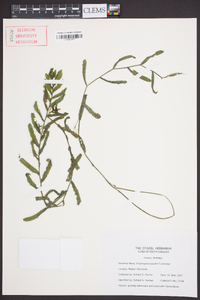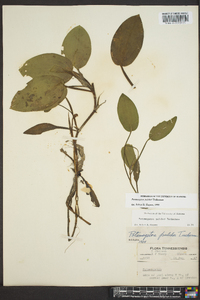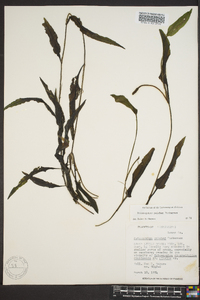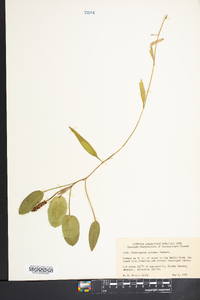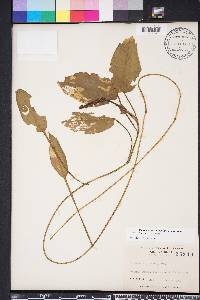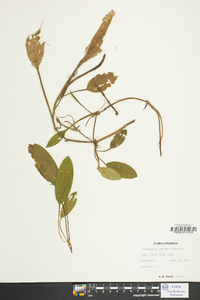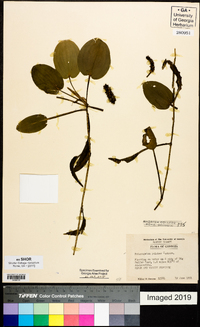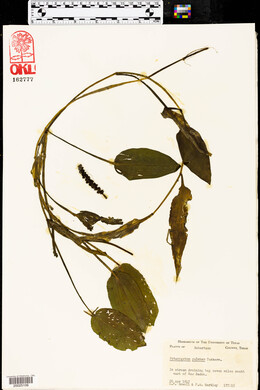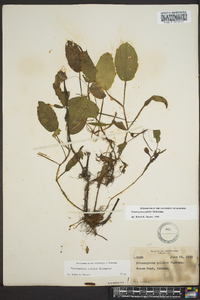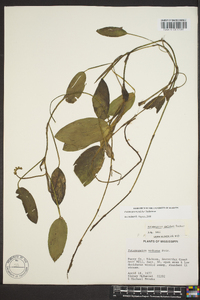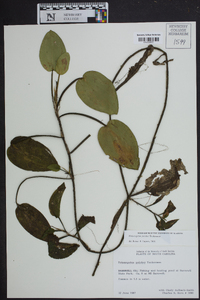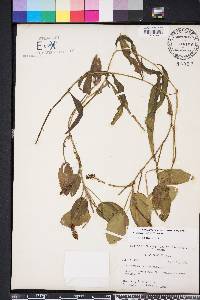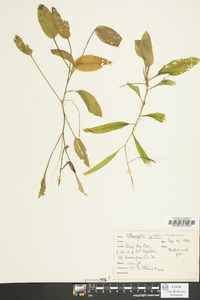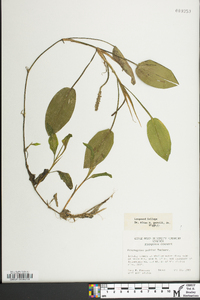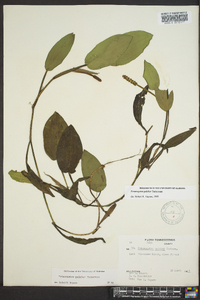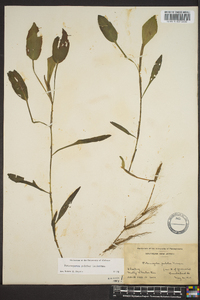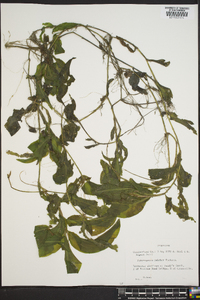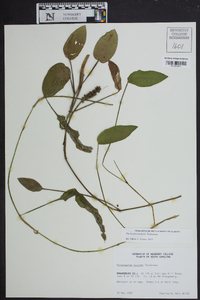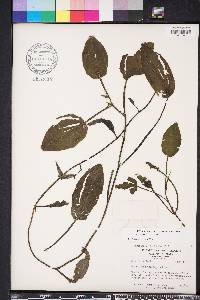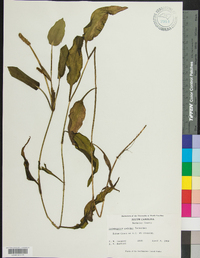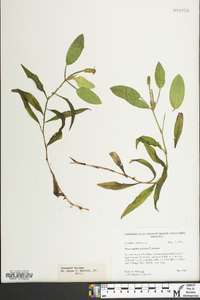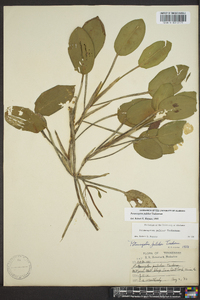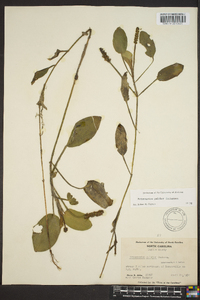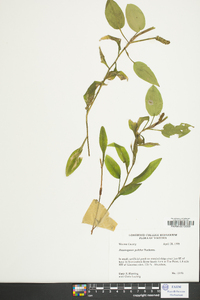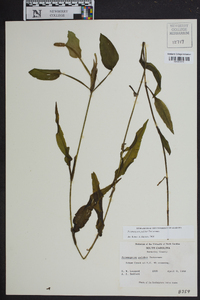Potamogeton pulcher
|
|
|
|
Family: Potamogetonaceae
Spotted Pondweed
|
Rhizomes present. Cauline stems terete, conspicuously spotted, 8--95 cm; nodal glands absent. Turions absent. Leaves both submersed and floating, ± spirally arranged. Submersed leaves petiolate, lax; stipules deliquescent, inconspicuous, convolute, free from blade, light to dark brown, not ligulate, 0.7--1.2 cm, not fibrous, not shredding at tip, apex obtuse; petioles 0.5--4.5 cm; blade dark green, linear-lanceolate to lanceolate, often arcuate, 3.5--13.8 cm ´ 60--165 mm acute, base acute to rounded, without basal lobes, margins entire, crispate, apex not hoodlike, acute to obtuse, lacunae in 2--5 rows each side of midrib; veins 7--19. Floating leaves: petioles continuous in color to apex, 1--16.5 cm; blade adaxially light to dark green, lanceolate to round-ovate, 2.5--8.5 cm ´ 11--44 mm, base rounded to cordate, apex acute to rounded; veins 15--21. Inflorescences unbranched, emersed; peduncles not dimorphic, terminal or axillary, erect to ascending, cylindric, 3.3--9.4 cm; spikes not dimorphic, cylindric, 17--36 mm. Fruits sessile, dark green to dark brown, ovoid to obovoid, turgid, abaxially keeled, laterally ridged, 5--6.5 ´ 4.1--5 mm, lateral ridges without points; beak erect, 0.5 mm; embryo with 1 full spiral. Chromosome number apparently unknown not available. Flowers summer--fall. Stagnant to slow-flowing waters of streams, lakes, ponds, and small rivers; 0--700 m; N.B., N.S., Ont. , P.E.I.; Ala., Ark., Conn., Del., Fla., Ga., Ill., Ind., Ky., La., Maine, Md., Mass., Mich., Minn., Miss., Mo., N.H., N.J., N.Y., N.C., Ohio, Okla., Pa., R.I., S.C., Tenn., Tex., Va., W.Va., Wis. Potamogeton pulcher is similar in morphology to P. amplifolius and occurs in similar habitats. Potamogeton pulcher differs from P. amplifolius by the former having lanceolate to linear-lanceolate submersed leaves with fewer than 19 veins, whereas the latter has ovate submersed leaves with more than 19 veins.
Perennial submersed aquatic herb with rhizomes to 0.5 m tall Stem: unbranched, jointed, with conspicuous black spots. Inflorescence: an upright, dense, cylindrical spike of flowers, emersed, unbranched, 1.5 - 4 cm long, on a terminal or axillary stalk. Stalk cylindrical, 3 - 12 cm long, a bit thicker than stem. Flowers: greenish, tiny. Stamens four. Anthers two-chambered, with four edge-to-edge sepal-like outgrowths. Fruit: an achene, stalkless, dark brown to dark green, 5 - 6.5 mm long, 4 - 5 mm wide, egg-shaped to reverse egg-shaped, plump, flat-sided, 3-keeled, with an upright, 0.5 mm long beak. Submersed leaves: more or less arranged spirally, on a 0.5 - 4.5 cm long stalk, translucent, 3.5 - 15 cm long, 1 - 3 cm wide, narrowly lance-shaped to lance-shaped with a rounded to tapering base and blunt to long-pointed tip, often arching, seven- to nineteen-veined, wavy along the margins. Stipules axillary, free from leaf blade, brownish, rolled up, to 6 cm long. Floating leaves: more or less arranged spirally, on a 1 - 16.5 cm long stalk, 2.5 - 8.5 cm long, 1 - 5 cm wide, lance-shaped to rounded egg-shaped with a heart-shaped to rounded base and rounded to pointed tip, 15- to 21-veined, leathery, firmer than submersed leaves. Similar species: Potamogeton amplifolius is similar but differs by its higher number of veins on the submersed leaves. Also, the leaves differ in shape. Flowering: June to early July Habitat and ecology: Very rare in the Chicago Region. Found in marshes, ponds, swales, and lakes. Occurence in the Chicago region: native Notes: Plants in the genus Potamogeton are very important to wildlife, offering habitat and food for many aquatic animals. Etymology: Potamogeton comes from the Greek words potamos, meaning river, and geiton, meaning neighbor, referring to the habitat of these plants. Pulcher means pretty, or handsome. Author: The Morton Arboretum Stems rarely over 5 dm, simple, black-spotted; submersed lvs narrowly lanceolate, undulate-margined, 8-15 נ1-3 cm, 9-19-veined, long-acuminate, tapering at base to a poorly defined petiole; floating lvs broadly elliptic or oval, 4-8 נ2-5 cm, many-veined, obtuse, the base broadly obtuse to subcordate; petioles stout, black-spotted, 2-8 cm; stipules axillary, free, to 6 cm, cuspidate to long-acuminate; peduncles 5-12 cm, somewhat thicker than the stem; spike dense, cylindric, 2-4 cm; frs obliquely obovoid, 3.5-4.5 mm (beak included), with flat sides and 3 low, sharp dorsal keels. Shallow, acid waters and muddy shores; s. Me. to Fla. and Ala., chiefly near the coast; s. Ind. to Mo. and Ark. Shore-forms may lack lvs of the submersed type. Gleason, Henry A. & Cronquist, Arthur J. 1991. Manual of vascular plants of northeastern United States and adjacent Canada. lxxv + 910 pp. ©The New York Botanical Garden. All rights reserved. Used by permission. From Flora of Indiana (1940) by Charles C. Deam My only specimen is from a pond in Sullivan County. It has been reported from the dune area. …… Indiana Coefficient of Conservatism: C = 10 Wetland Indicator Status: OBL |
|
|
|

